
You asked: How do I write in a crisp, clear, conversational style?
The best white papers are written in a crisp, clear, sparkling style.
Those papers stand out like a refreshing drink of pure water in a sea of dreck.
Some people ask how to achieve that level of clarity.
—”How do you write briefly in a friendly and conversational way?”
—”What if you were taught to write in a dry, linear fashion?”
—”How do you turn geekspeak into plain, readable, and engaging language?”
That’s a lot of questions. Any answer has to cover a lot of ground. So here goes.
Here are my five tips for any writer who wants to improve your style:
- Understand what makes clear writing
- Steep yourself in good writing
- Learn your writing tools
- Be prepared to revise and rewrite
- Get lots of practice writing
Let’s look at each of those tips in turn.
Tip 1: Understand what makes clear writing
Clear writing is all about readability, or how much effort it takes to read a text.
To improve your writing style, you must understand readability.

Scientists and publishers have been working on formulas to calculate this measure for 75+ years.
Today researchers are starting to use AI to refine this process even further. But that doesn’t make it any easier to achieve.
However you calculate it, readability comes down to one main lesson:
Use shorter words, shorter sentences, and shorter paragraphs
But how can you get away with doing that… especially if you’re writing for people in fields like engineering, law, medicine, or science?
Most people in those fields believe the only way to make anything shorter and simpler is to “dumb it down” by dropping significant ideas.
But do you agree with that? I don’t.
A writer who puts in the work can express complex ideas clearly and simply.
Here’s your #1 sourcebook for doing that: The Elements of Style.
If you haven’t looked at your Strunk & White recently, grab it right now.
And if you don’t have a copy, get one today. Every writer needs this little book within easy reach.
I reach for my copy whenever I need a shot of inspiration or a reminder on how to write clearly.
For about $10, The Elements of Style is the best book on writing clear English ever published.
One of my favorite rules in the book is, “Omit needless words.”
And under that rule, here’s my favorite passage:
A sentence should contain no unnecessary words, a paragraph no unnecessary sentences, for the same reason that a drawing should have no unnecessary lines and a machine no unnecessary parts.
Focus on Part II: Elementary Rules of Composition and Part V: An Approach to Style. These 32 pages provide a timeless guide to clear writing.
Who could disagree with advice like this:
- Choose a suitable design and hold to it.
- Use the active voice.
- Use definite, specific, concrete language.
And there’s another couple dozen pointers with lots of background for each one. You can’t go wrong with this guide.
Tip 2: Steep yourself in good writing
Here’s another way to improve your writing: Read something by a really good writer, every day.
And read mindfully. Read critically.
That means re-reading passages that you think really work. Ask yourself why.
And notice passages that don’t work for you. Why not? How would you re-word them? How would you make them more sparkling?
Reading this way will pay off in many ways, by:
- Showing you tips and tricks for writing clearly
- Proving that it’s possible to convey information in an engaging way
- Inspiring you to put in the effort to do your best
And it’s easy to justify any time you spend reading this way: You’re studying how to become a better writer.
Find some magazines that feature great writing
Here are some magazines that I always enjoy:
All these present information about finance, science, and technology in a clear and engaging way. And they feature lively writing about more “squishy” topics like culture and politics as well.
You can read a few free articles every month, or buy an entire issue that especially interests you.
Read non-fiction books of all types
Consider biographies of people who lived in different times and places. Notice how the authors create vibrant scenes and conversations that they didn’t live through.
Consider histories of certain events, discoveries, or fields. Notice how the authors paint pictures to describe events and places across time.
And pick up books about things you never cared about.
Read about things you never studied, things you always thought were too complicated, things you could never possibly understand.
The case studies of Sigmund Freud? Cats in ancient Egypt? How impossible lifeforms thrive around underwater vents? The discovery of Neptune? Helen Keller?
See if an author can get you engaged and keep you reading. And notice how they do that.
Writers need to be curious, to have an ongoing desire to learn.
So when you push past the normal boundaries of your interests, you may be surprised by what you discover.
Here’s an example from my own reading
I never studied rhetoric. I barely knew what it was.
And in my ignorance, I decided rhetoric was old-fashioned, over-complicated, and irrelevant to what I did writing white papers.
Was I ever wrong!
One day I heard the British author Sam Leith on the radio about his new book, Words Like Loaded Pistols: Rhetoric from Aristotle to Obama.
A former journalist, Leith made rhetoric fresh, accessible, and relevant.
He explained how rhetoric is all around us.
And I began to see how it drives every effective white paper.
I was fascinated by this new field, and I’ve continued delving into it ever since.
I even wrote an article on Aristotle’s three elements of persuasion in white papers. Turns out rhetoric is totally relevant to white papers?!
Learn from great fiction writing as well
Your mindful reading should be mostly non-fiction. But B2B writers can learn from top-quality fiction as well.
For example, notice how good fiction writers achieve all this:
- Creating scenes at a specific time and place
- Picking a few details to convey character
- Using natural-sounding dialog
- Working in broader themes
Content writers can use some of these techniques when we write for clients.
The most obvious place to do that is when you’re writing a case study.
Every case study requires quotes, scenes, memories, and reflection.
And a good figure of speech can wrap up the whole case study, from the title to the conclusion.
For example, I wrote dozens of case studies for Intuit, makers of Quickbooks accounting software.
One was about a small business that sold watches, so I decided to use the metaphor of “time” throughout the story.
At the start: [name] knew time was running out for the family business.
In the middle: Now QuickBooks generates detailed reports every month, like clockwork.
At the end: QuickBooks has truly helped the company change with the times.
Another example: For a white paper I wrote on the mundane topic of saving money on smartphone bills, I found a memorable quote in a finance magazine:
All the individual bills can seem insignificant, but when you add them all up, you may find yourself choking on your morning coffee.
What a great image! And there’s room for a lot more of those in B2B writing.
Learning from great writers will give you the models to follow, the inspiration to try for yourself, and the confidence to believe you can do it.
Tip 3: Learn your writing tools
These days we have a wealth of tools to help us write better. And most of these are built right into the software you already use: Word or Gdocs.

Word includes all these writing tools:
• Word Count
• Dictate
• Read Aloud
• Readability Statistics
Every writer should know how to use these.
They’re just a click away. And they’re free!
Word count: Watch the running word count at the bottom of your Word window. Select a certain passage and then select Tools > Word Count.
Make it a game: Try to reduce the word count of your next draft by 10% or some other round number.
Dictate: Effective speech recognition is now built into Word. That means you can now “write like you speak” by dictating your drafts.
To get started, look at the far right end of the Home ribbon and click on Dictate.
Find out more about using Dictate in Word here and get a free cheatsheet to help you dictate.
Read Aloud: You can also get Word to read back your drafts while you listen.
I love doing that. Hearing my draft read aloud shows me where I need to smooth out the wording or break a long sentence in two.
To get started, look at the Review ribbon and click Read Aloud. Word will read back any selected text.
You can also adjust the voice and reading speed.
Readability Statistics: Word includes a free readability analyzer.
To check if it’s set up, go to Word > Preferences… > Spelling & Grammar, and then check Show readability statistics.
From then on, after you run a spell check, you will see a panel like the one below showing some key readability metrics on your text.
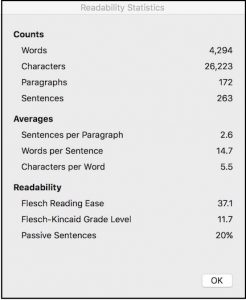
As you can see from these scores, this draft needs work:
- Flesch Reading Ease of 37.1 out of 100 is poor. The higher, the better here. I aim for at least 50 in a white paper.
- Flesh-Kincaid Grade Level of 11.7 is so-so. This means a high-school senior could read this draft. The lower, the better here. Most magazines are written at Grade 8 or lower. I aim for Grade 10 in a white paper.
- Passive Sentences of 20% is pretty high. It’s impossible to eliminate all passive voice, but I aim for 10% here.
You can run this readability check as often as you wish. Make it a game to see how much you can improve your stats on each draft.
If you’re using GDocs, you have all the same tools available
![]()
Word Count: Select a certain passage and then select Tools > Word Count.
Voice Typing: Put your cursor where you want to start dictating, then select Tools > Voice Typing.
Read Aloud: On the Mac, select the text you want to read and press Ctrl+T.
Under Windows, this takes a few more steps, as explained in this article. But that only takes a few moments, and from then on you’ll have that feature.
Readability Statistics: Use a free readability checker from this list.
Every professional writer should know and use these tools. These can really help you revise and rewrite, as the next tip explains.
Tip 4: Be prepared to revise and rewrite
Writing is rewriting. It’s that simple.
Just because you manage to set down your first draft, you’re not done yet.
Your first draft is just the start. For best results, you need to polish that draft. More than once.
Every professional writer knows this. No one hits the bullseye on their first shot.
I routinely do five drafts of anything I write. And every draft gets better.
So after you finish a draft and let it rest overnight, go back through it.
Look for three things you can improve:
- Long, complex words
- Long, run-on sentences
- Long, dense paragraphs
When you find any of these, fix it immediately:
- Replace long words with shorter, simpler words
- Split long sentences into two shorter sentences
- Break long, dense paragraphs into two or three shorter paragraphs
For help replacing longer phrases with shorter ones, get my cheatsheet of 100+ wordy phrases to avoid.
The left column shows a wordy phrase like “at that point in time” and the right shows a shorter replacement such as “then.”
You can review this list from time to time to remind yourself about how to save words.
In time, you will never use any of the longer phrases. Or if you do, you will edit them out when you polish your drafts.
So remember: Writing is rewriting.
Tip 5: Get lots of practice writing
Some writers say you need to write a million words before you get any good.
I’m not sure about that precise number. But there’s a kernel of truth there.

No one is born knowing how to write.
And learning how to write clearly takes lots of practice.
Fortunately, when you write B2B content for clients, you get lots of practice.
But even before you land assignments, try to write something every day.
As accomplished writer Alexander Green suggests, this can be a memory from your own life or an opinion you feel strongly about.
You can share your words with a writing buddy, circulate them to an e-mail circle, publish them for all to see on a blog, or just keep them private.
However you manage to do it, writing every day is excellent training.
For example, when I was in high school, I wrote down all my dreams every morning with as much detail as I could.
I found it challenging to describe the surreal dimensions and shifting dimensions of a dreamscape.
But my “dream journal” gave me practice writing many thousands of words.
See if you can find some similar way to write a journal about your own life.

In Malcolm Gladwell’s book Outliers, he found the “magic number” of 10,000 hours; in other words, people need to spend 10,000 hours practicing any activity to become really accomplished at it.
So if you’ve only been writing on and off for a year or two, don’t be surprised if you’re not happy with your style yet.
In fact, this is a predictable stage for any writer.
Especially when you steep yourself in good writing, you develop an appreciation for wonderful, clear writing. And you can be disappointed that you can’t express things with the same clarity.
That’s because your taste has surpassed your skills. But that’s a good thing! That gives you a goal to aspire to.
And if you stick to writing often, you will definitely get better at it. Over time, your skill level will catch up to your appreciation.
Conclusions
To sum up, any writer who wants to improve your writing style needs to:
- Understand readability
- Steep yourself in good writing
- Learn how to use your writing tools
- Be prepared to revise and rewrite
- Get lots of practice writing
After a lifetime of writing, that’s my considered advice on achieving a clear writing style.
I hope that helps you in your writing journey.
Are you happy that your writing style is crisp, clear, and conversational? How did you develop that? Please leave us your comments below.
Want to hear whenever there’s a fresh article on this site? Subscribe here to stay in the know on long-form content. From time to time, we’ll also send you news about some great new resource or training. And you can unsubscribe anytime.

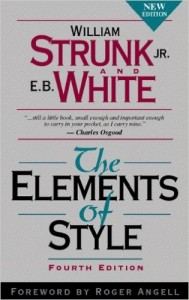




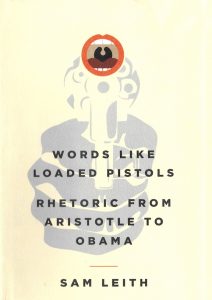
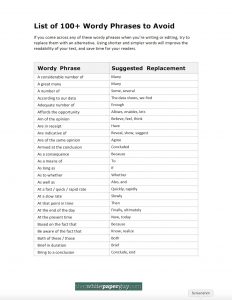

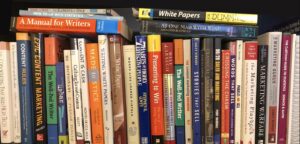

Fabulous tips and reminders, Gordon.
I can’t wait to try out the read aloud option. I always read my final drafts aloud, but hearing it will offer a different perspective on clarity and flow.
Such great advice. For my degree, we had firm word limits set on all papers. At first I found it restrictive but my writing improved considerably in clarity and relevance. I’m not familiar with ‘The Elements of Style’. Does it discuss grammar at all? As a native English speaker I never learned much in school, but after studying and teaching grammar I found my writing improved. Being able to identify parts of speech and knowing the basics of clause structure helps construct solid sentences and paragraphs more easily.
Hi Anne: Yes, most artists say that constraints improve creativity. The Elements of Style is certainly not a primer on grammar, but it does have some prescriptive advice. I’m in the same boat as you: Being educated at the time I was, I never studied English grammar for 5 minutes in any level of school! Weird when you think about it, right? When Angie first met me, she thought English must be my second language because I made so many mistakes when I spoke! Well, we live and learn.
My writing is for the biotechnology industry, so the reading ease indicator is not as applicable for much of my work. But the passive sentences stat is really helpful. Why is it so easy to revert to passive when I know it should be active? 🙂
Strunk & White is a timeless resource!
Thanks for sharing such great info with us, TWPG!
Hi Christina: Yes, when we write for an industry that routinely uses long technical terms, that tends to push up the ratings from the readability formulas, for sure. That’s when we have to try doubly hard to keep the sentences short, and as you’ve found, to take things out of the passive voice that scientists and engineers tend to use. Thanks for your comments!
I’m just starting to learn this amazing art. Thank you for the tips and inspiration.
I really enjoyed this piece, thank you. I also now want to know more about cats in ancient Egypt! Would you say some of these pieces of advice apply to all forms of writing and speech, or just certain kinds? And if just certain kinds, how do you decide which? For example, would the world be a better place if no English speaker ever used the passive voice? Or is it just a bad idea for those writing copy? Or even more specifically, for those writing white papers? Many thanks.
Hi, Gordon –
Clear and concise advice, as always.
One of the best writing experiences ever was a maternity fill-in as a radio station copywriter: all I did was write (and produce) 29.5 second commercials and PSAs. The climax came late in December when station management realized they’d forgotten to tell me about the 120 commercials they’d need for business greetings through the holiday season. They remembered on Friday afternoon; production to begin the following Monday morning.
There are simply not enough synonyms in the English language to avoid word overuse in that situation.
While that was one horrid weekend, the overall experience of having to be so concise, day in and day out, was probably the greatest boost to my writing confidence. And it is pretty cool to hear the commercials you wrote, produced, and voiced on the radio on the way home.
But no, never again.
PS – Hope all’s well with you and yours.
This advice can be useful in so many different realms. Thanks for posting!